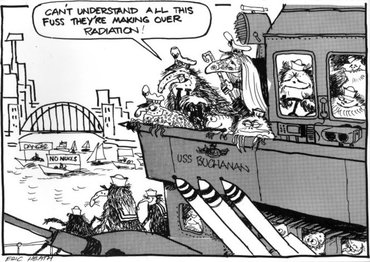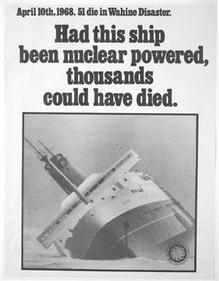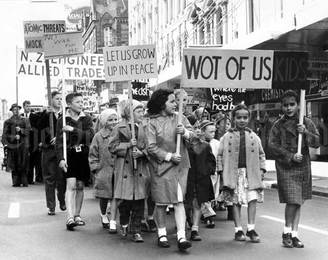|
A social cause of anti-nuclear protest in New Zealand was the concern over the negative impact the radiation from testing nuclear weapons would have on people and the environment. During the 1960’s the NZCND made attempts to inform people about the effects of radiation and the danger it posed even to people not involved in the testing. This managed to garner a lot of support for the NZCND. The rising level of radiation in New Zealand milk proved to people that they were right to be so concerned about the radiation, as it threatened their health and those who consumed it after it had been exported. In later years it was revealed that about 250 nuclear warheads had been tested in the Pacific over the latter part of the 20th century. An estimate by the United Nations said that around 150,000 people would have died or been destined to die due to the radiation that came from testing nuclear weapons in the Pacific.
“A war means that you fight a war, you win, and you rebuild yourself up from the rubble. This is not a war; this is extermination. (…..) In the event of a nuclear war, the living will envy the dead.” |
These tests were conducted by the Americans, British, Chinese, and the French. Health concerns were a major factor in causing women to protest nuclear testing, in order to protect the health of their children from radiation. The artist Robin White cites seeing footage of Hiroshima at a young age as the reason she became aware of the health effects radiation could have on the people the atomic bomb left alive. Dr Helen Caldicott’s visit to New Zealand was a factor in many women becoming anti-nuclear protestors. In the DVD ‘No Nukes is Good Nukes!’ the activists who spoke mentioned her talks as being clear and blunt about what would happen in a nuclear war and of the horrors such a war would cause. This personal way of looking at it was effective in convincing many New Zealanders of the threat nuclear tests in the Pacific held for New Zealand. |



